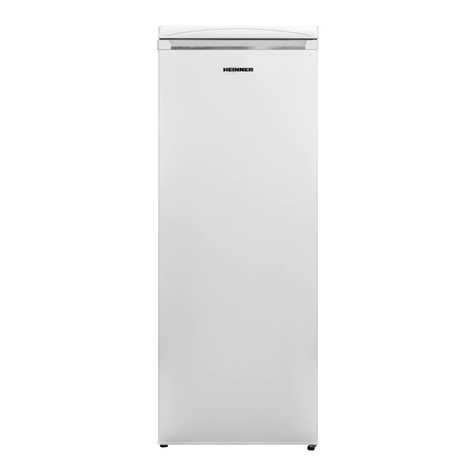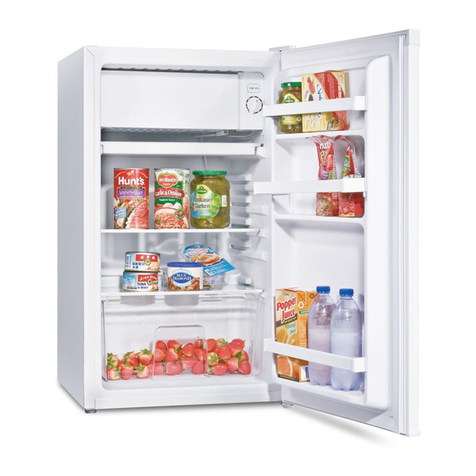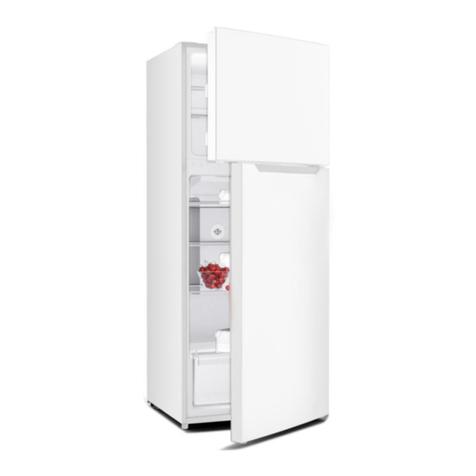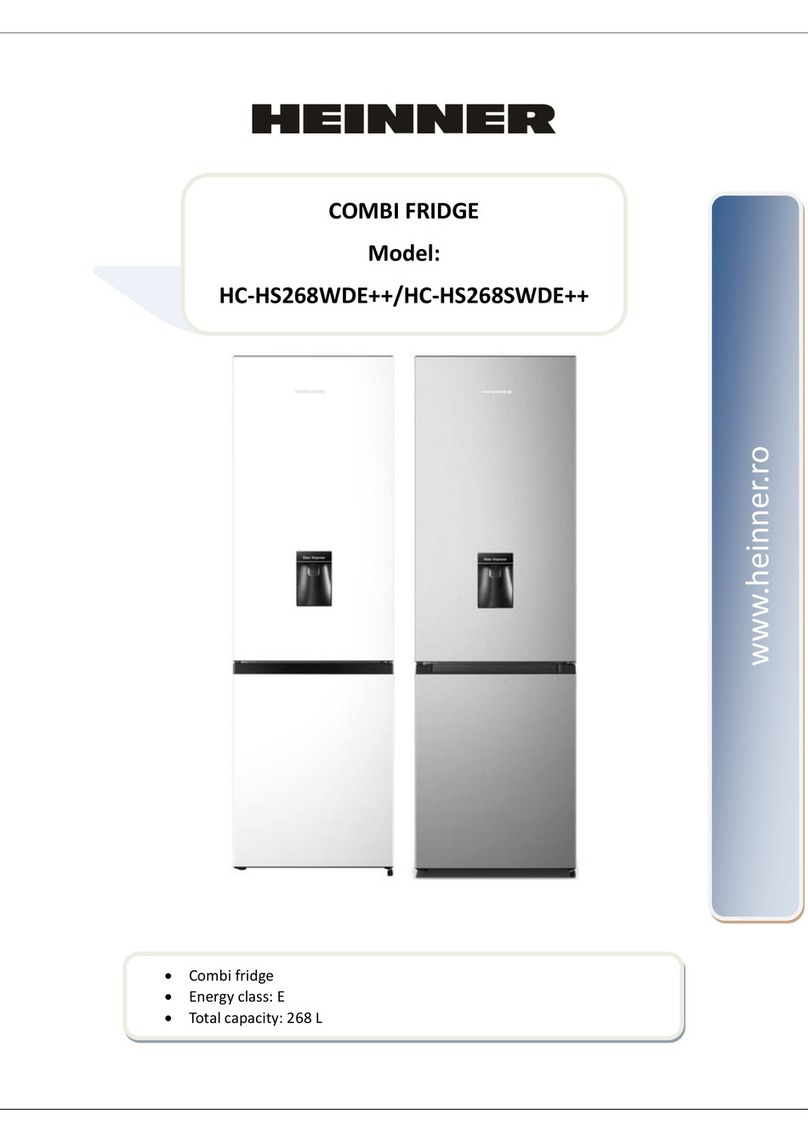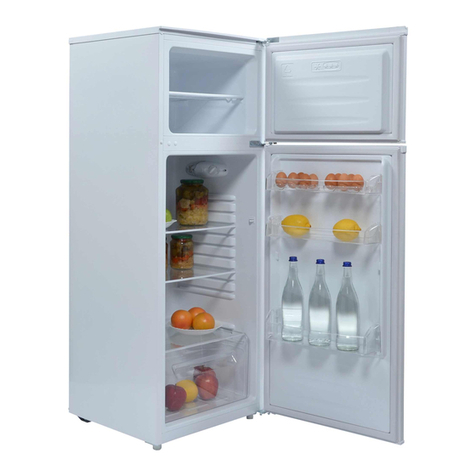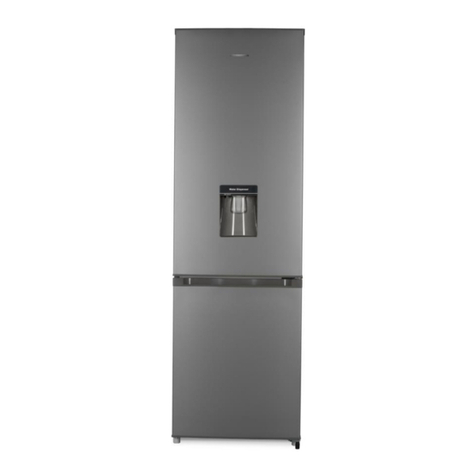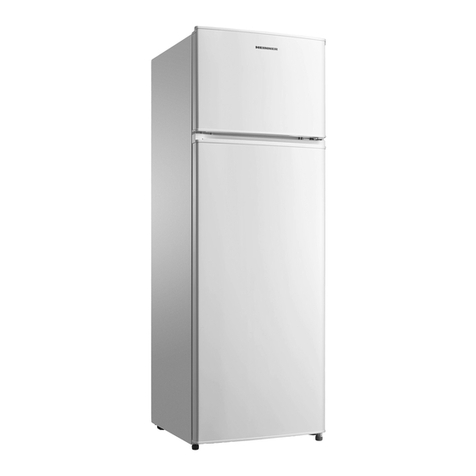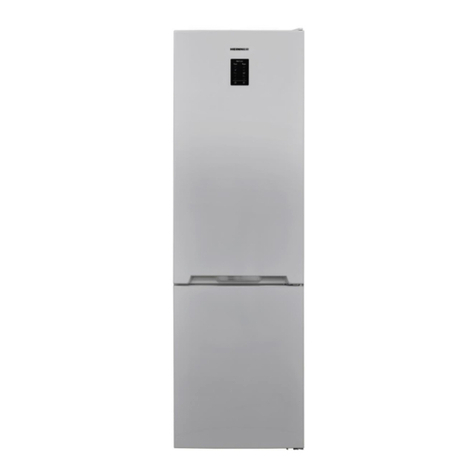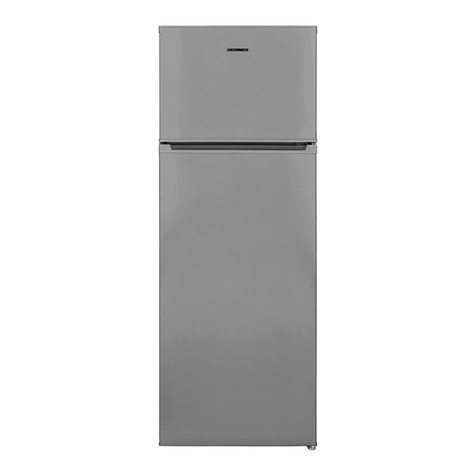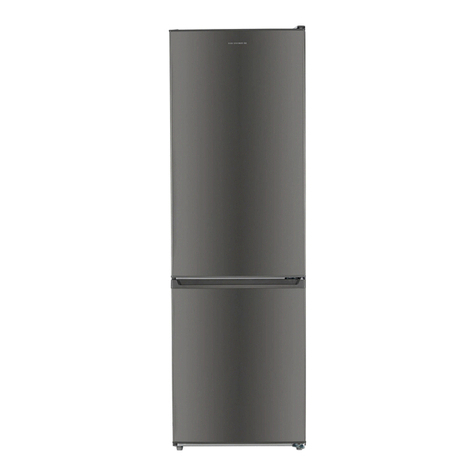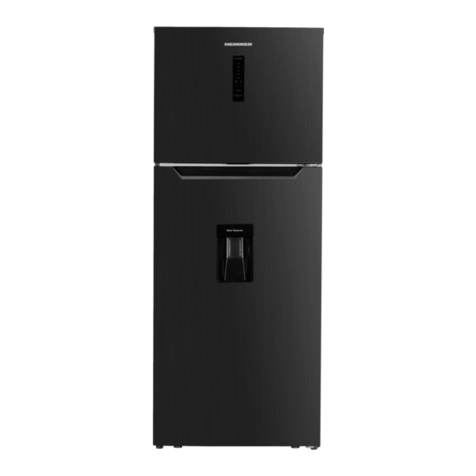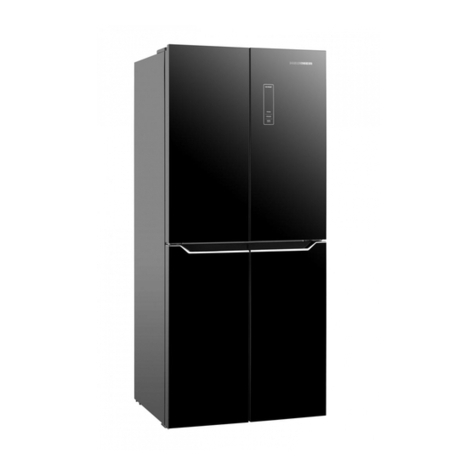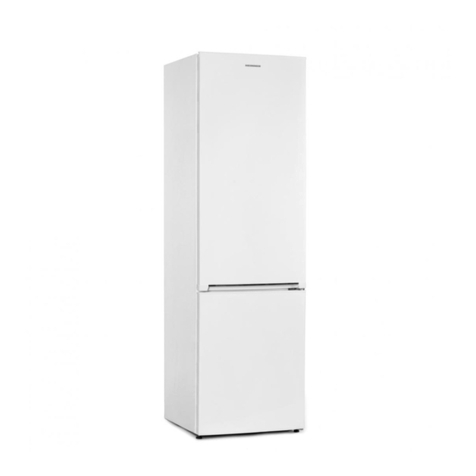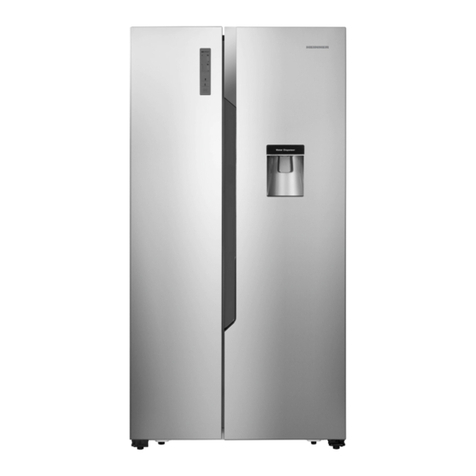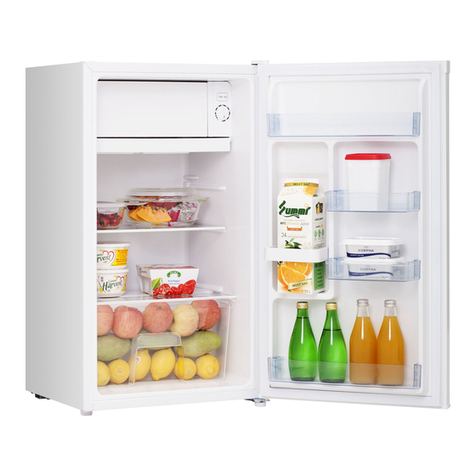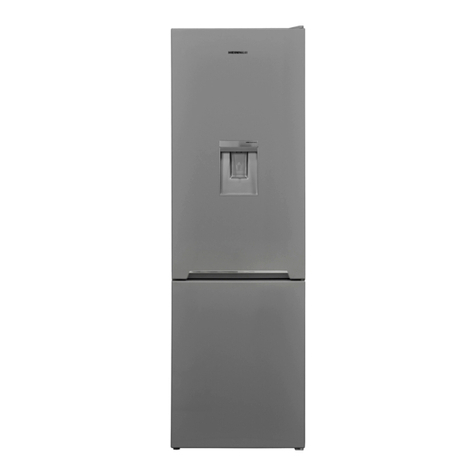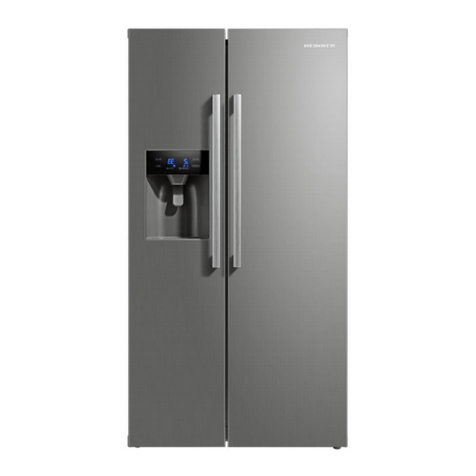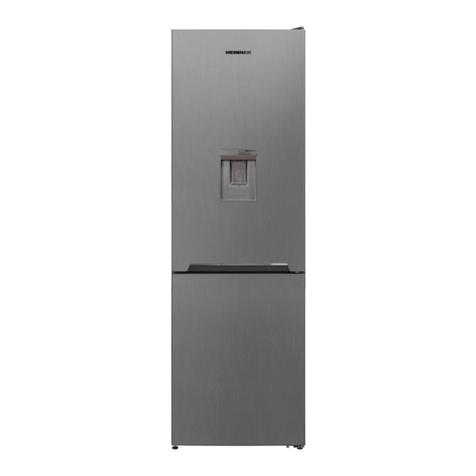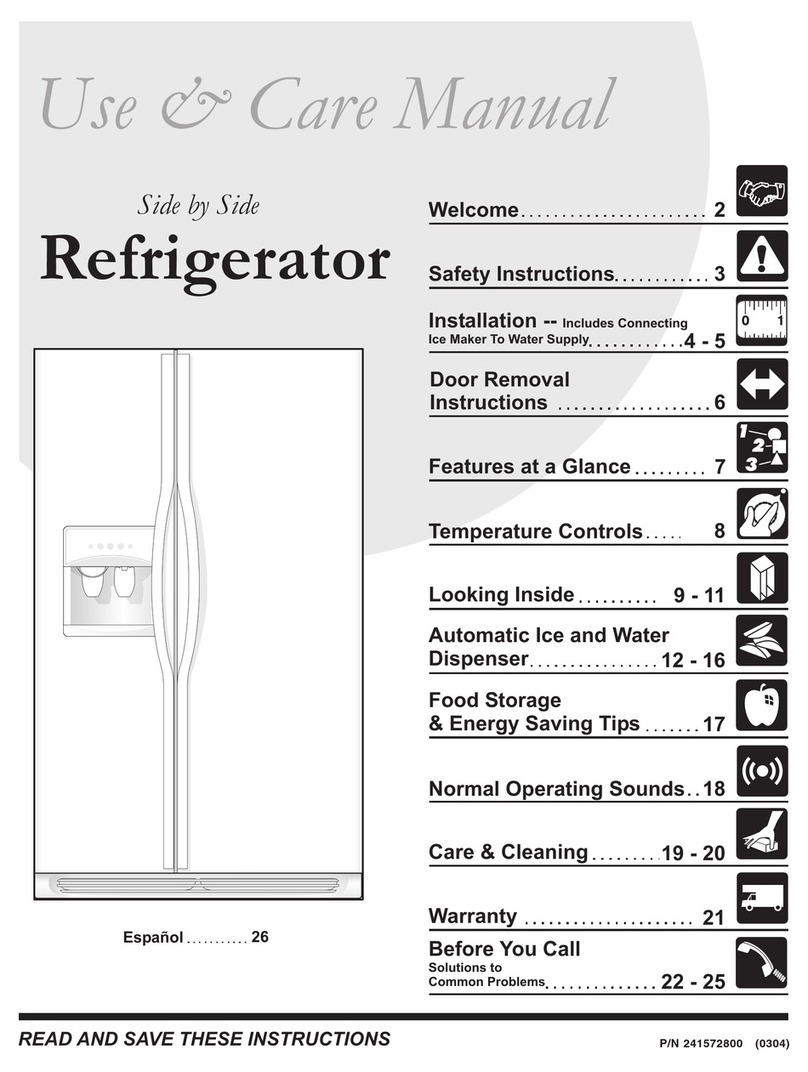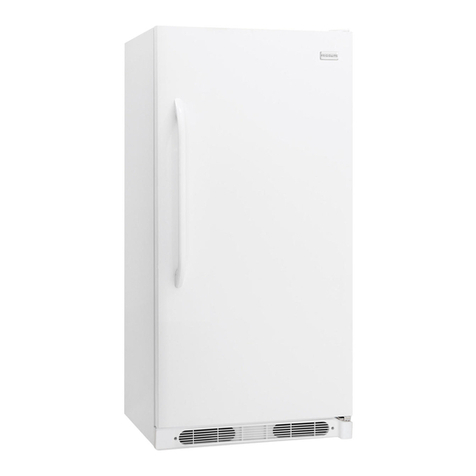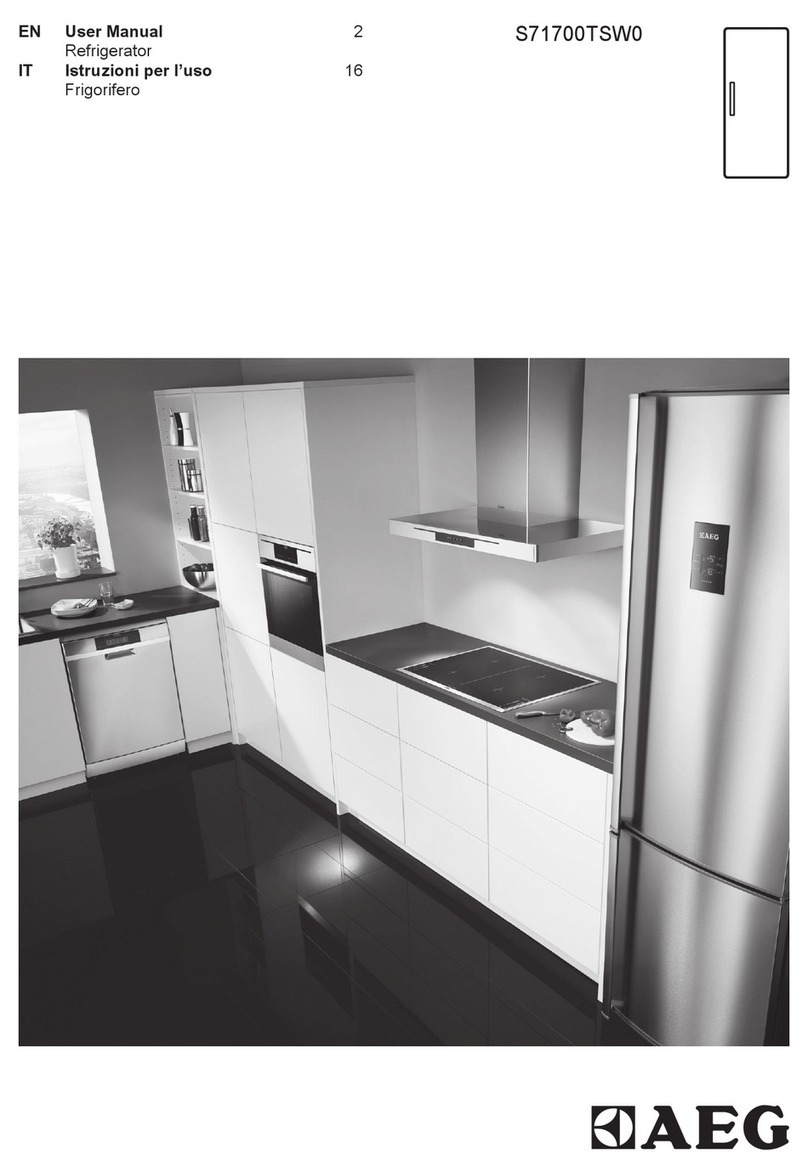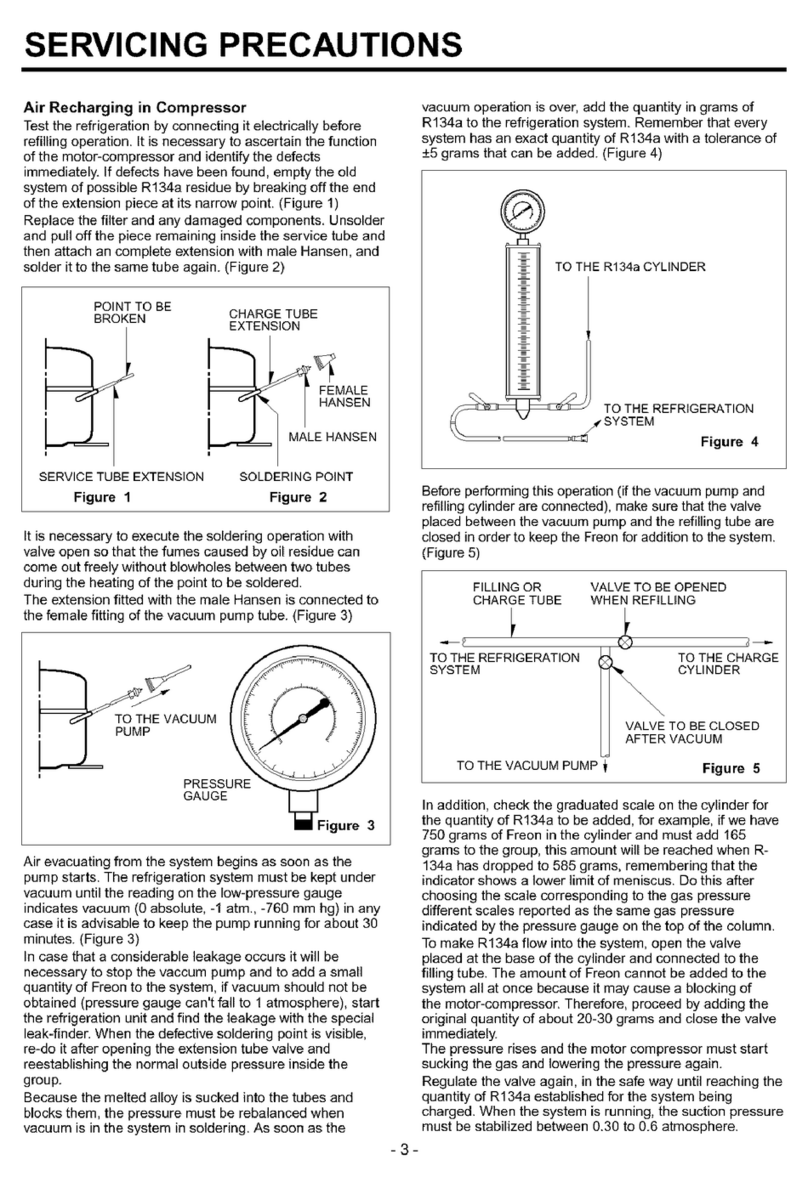•Do not allow any child to get into or climb the refrigerator; otherwise
suffocation or falling injury of the child may be caused.
•Do not place heavy objects on the top of the refrigerator considering that
objectives may fall when close or open the door, and accidental injuries might
be caused.
•Please pull out the plugin case of power failure or cleaning. Do not connect
the freezer to power supply within five minutes to prevent damages to the
compressor due to successive starts.
Warnings for placement
•Do not put flammable, explosive, volatile and highly corrosive items in the
refrigerator to prevent damages to the product or fire accidents.
•Do not place flammable items near the refrigerator to avoid fires.
•The refrigerator is intended for household use, such as storage of foods; it
shall not be used for other purposes, such as storage of blood, drugs or
biological products, etc.
•Do not store beer, beverage or other fluid contained in bottles or enclosed
containers in the freezing chamber of the refrigerator; otherwise the bottles
or enclosed containers may crack due to freezing to cause damages.
Warnings for energy
•Refrigerating appliances might not operate consistently (possibility of
defrosting of contents or temperature becoming too warm in the frozen food
compartment) when sited for an extended period of time below the cold end
of the range of temperatures for which the refrigerating appliance is designed.
•The fact that effervescent drinks should not be stored in food freezer
compartments or cabinets or in low-temperature compartments or cabinets,
and that some products such as water ices should not be consumed too cold.
•The need to not exceed the storage time(s) recommended by the food
manufacturers for any kind of food and particularly for commercially
quick-frozen food in food-freezer and frozen-food storage compartments or
cabinets.
•The precautions necessary to prevent an undue rise in the temperature of the
frozen food while defrosting the refrigerating appliance, such as wrapping the
frozen food in several layers of newspaper.
•The fact that a rise in temperature of the frozen food during manual
defrosting, maintenance or cleaning could shorten the storage life.
•The necessity that, for doors or lids fitted with locks and keys, the keys be
kept out of the reach of children and not in the vicinity of the refrigerating
appliance, in order to prevent children from being locked inside.
